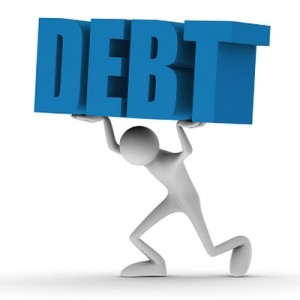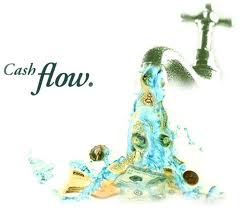 Credit card debt represents the single biggest threat to the financial health of countless millions of Americans. According to the Federal Reserve, after peaking at $1.021 Trillion in April 2008, the global financial crisis motivated Americans to trim their credit card debt to $832.4 Billion by April 2011. Since then, credit card debt has increased in each of the last 10 months (through 12/31/2015) and now totals $935.6 Billion.
Credit card debt represents the single biggest threat to the financial health of countless millions of Americans. According to the Federal Reserve, after peaking at $1.021 Trillion in April 2008, the global financial crisis motivated Americans to trim their credit card debt to $832.4 Billion by April 2011. Since then, credit card debt has increased in each of the last 10 months (through 12/31/2015) and now totals $935.6 Billion.
When you consider the staggering amount of interest paid on that debt each month, and that none of that money is going into your savings and/or retirement, it should become painfully obvious that every effort should be made to eliminate that debt as soon as possible. Every dollar you pay in interest to the credit card companies is a dollar you did not put to work for you.
There are many different methods people employ for getting out of debt and there is no right or wrong method. However, some methods are more effective and can save you more money than others. Additionally, there are some common mistakes that, if avoided, may save you even more time and money.
One of my mentors developed a simple formula for getting out of debt the safest and quickest way possible. Before I share this simple formula there are a few ground rules that will amplify your results:
- You should not begin paying off any debt until you have an emergency reserve. Without an emergency reserve many people, whether they realize it or not, are using their credit cards as their emergency reserve.
- You should focus on paying off one credit account at a time. If you send a little bit extra on several different accounts at the same time your results will be diluted and you’ll find that it will take much longer to get out of debt.
- You should no longer make purchases using the credit account you are trying to pay off. It is very difficult to pay off a credit account if you continually run the balance up making new purchases. You counteract any progress you may have made.
The simple formula for getting out of debt uses what is called the Cash Flow Index to determine the priority for paying off your debts. The idea behind the formula is to pay off the debt that gives you the greatest cash flow for the least investment, without regard for which account has the highest interest rate.
Begin by making a list of your creditors, their respective account balances, and their respective required minimum monthly payments. To determine your Cash Flow Index, take each of your credit account balances and divide each of them by their respective payments. Whichever one has the lowest number is the one you should pay off first.
Cash Flow Index = Current Account Balance ÷ Required Minimum Monthly Payment
A LOW Cash Flow Index indicates that you have a high required minimum monthly payment in relation to the account balance.
A HIGH Cash Flow Index means that you have a low required minimum monthly payment in relation to the account balance.
For example:
Home Loan Balance: $228,000 Interest Rate: 5.0% Monthly Payment: $1,665
Cash Flow Index: 137 ($228,000 ÷ $1,665)
Auto Loan Balance: $16,500 Interest Rate: 6.0% Monthly Payment: $450
Cash Flow Index: 37 ($16,500 ÷ $450)
Credit Card Balance: $13,000 Interest Rate: 18.0% Monthly Payment: $260
Cash Flow Index: 50 ($13,000 ÷ $260)
Student Loan Balance: $107,000 Interest Rate: 3.9% Monthly Payment: $650
Cash Flow Index: 165 ($107,000 ÷ $650)
In this example, logic dictates that you pay off the credit card first because it has an 18.0% interest rate, but the Cash Flow Index reveals that the auto loan should be paid off first because it has a Cash Flow Index of 37 versus 50.
 In this case, by paying off the auto loan first, you increase your monthly cash flow by $450 per month, plus any extra money you’ve been sending to the auto loan, which can then be applied toward the credit card balance or any other of your financial priorities. Additionally, if a sudden disruption to your income were to occur you have $450 per month less in committed monthly expenses.
In this case, by paying off the auto loan first, you increase your monthly cash flow by $450 per month, plus any extra money you’ve been sending to the auto loan, which can then be applied toward the credit card balance or any other of your financial priorities. Additionally, if a sudden disruption to your income were to occur you have $450 per month less in committed monthly expenses.
We live in very different times than our grandparents did. While cash flow was important to them, access to credit was very limited so they did not have excessive outstanding non-mortgage debt. Today, according to a 2016 study by www.valuepenguin.com, a typical American household that carries credit card debt owes an average of $15,779.
Paying off the auto loan first means you can pay off both faster than if you started with the credit card. Knock out those high payments first and you free up cash to work on other debts.
I routinely improve my client’s cash flow by hundreds, and sometimes even thousands, of dollars per month by helping them become more financially efficient. If you would like my help developing a strategy to get rid of your debt call me to discuss your specific situation.
Leave a Comment